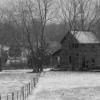I have been (slowly) learning to use hand tools. I finally learned to sharpen a card scraper today. Yes, pretty basic for some (ok, most) of you on here, but hey, one step forward for me. This was the first time that I used a scraper to make shavings and not sawdust. It was a total a-ha moment and I had to take some pictures to share. I have to say it was awesome to see a card scraper work the way it is supposed to work. My immediate impression was "wow, those guys hundreds of years ago really knew what they were doing."
20190218_123125-sm.jpg20190218_123146-sm.jpg
I used the process in Mike Pekovich's "The Why and How of Woodworking" book. This one skill alone is worth the $24 I paid for the hardcover on Amazon.




 Reply With Quote
Reply With Quote
 .
.





